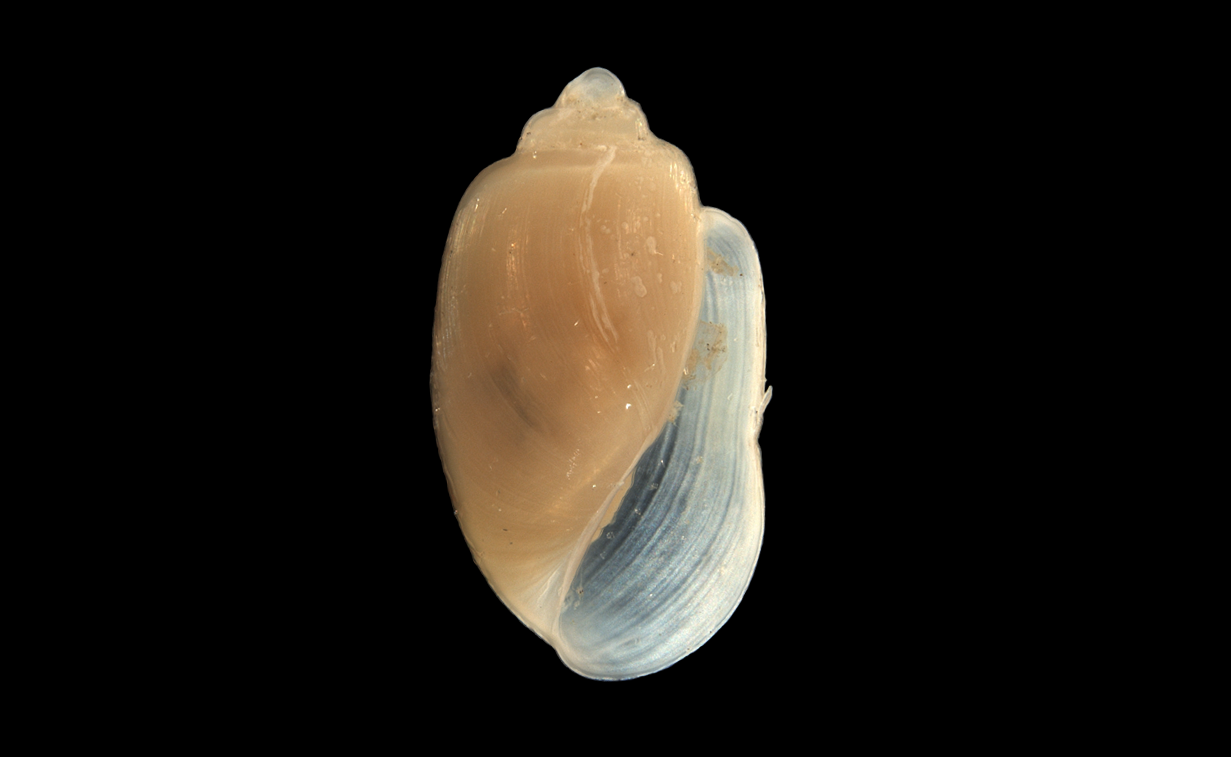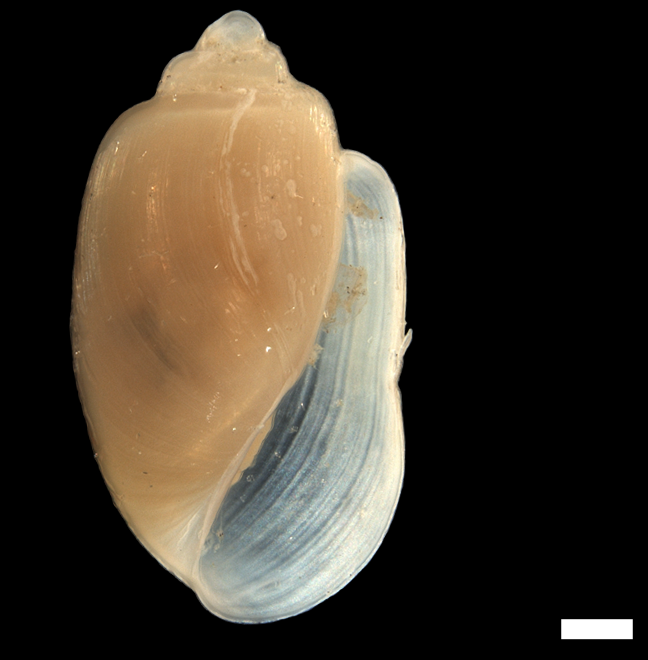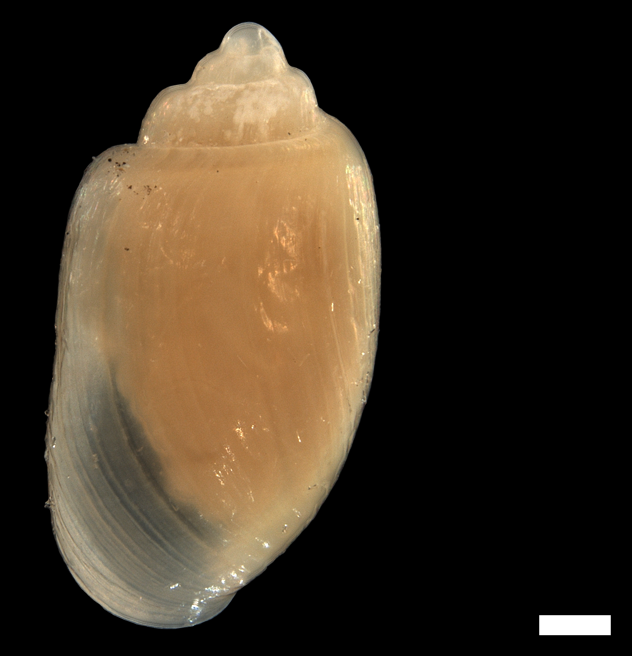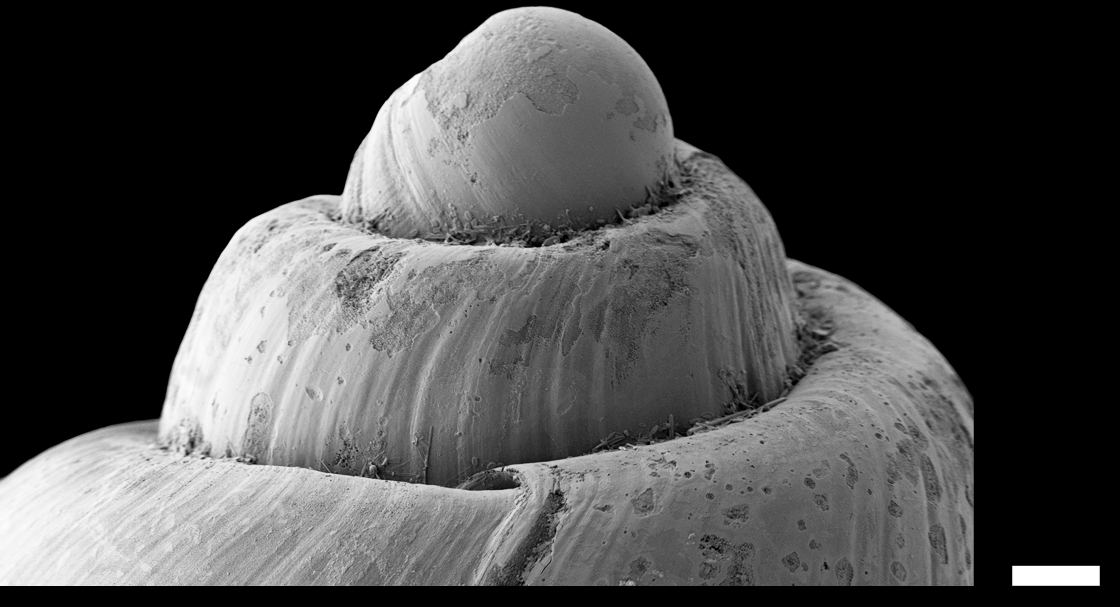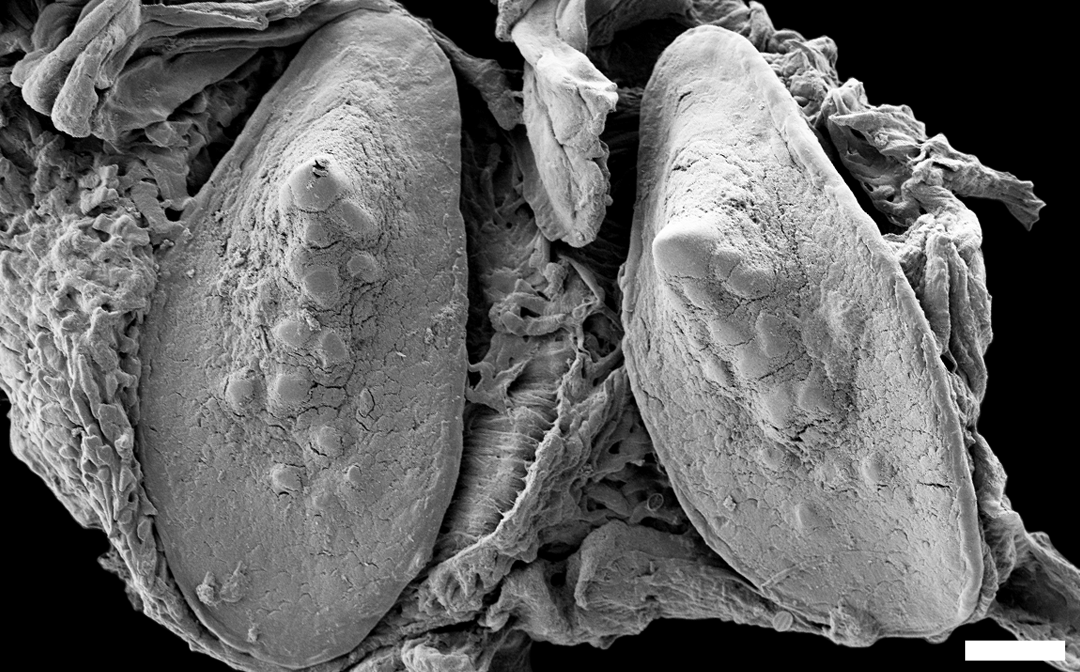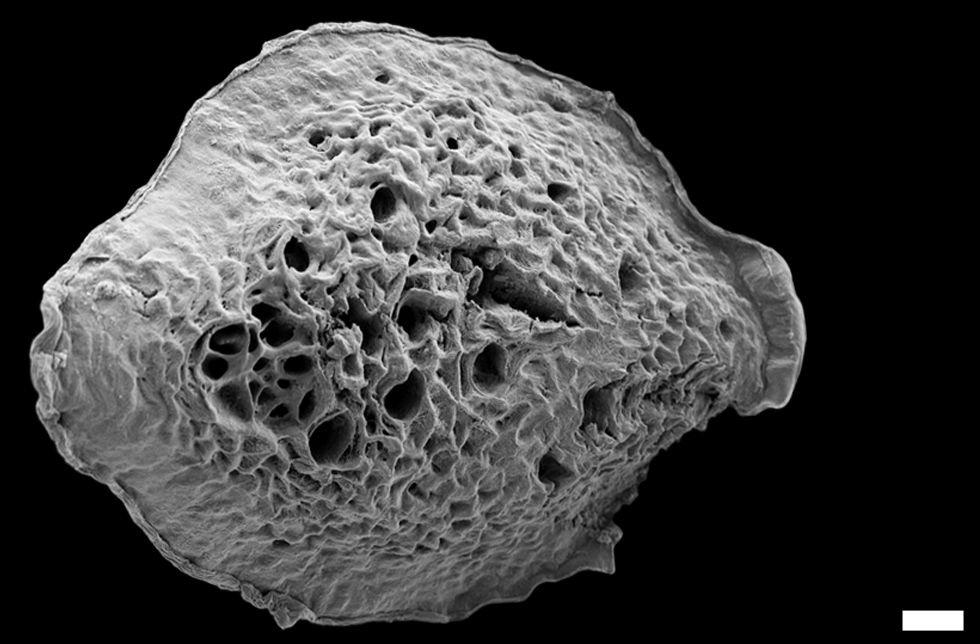Retusa obtusa
Shell description
The thick shell is external and white to whitish transparent in colour, with an elongate cylindrical shape. The opening is small the edge extend the length of the last largest whorl of the shell. The top of the shell (apex) is truncated (shortened) or can extend slightly out of the shell. The shell is umbilicated. The shell sometimes has a pattern consisting of faint spiral lines and faint growth lines. The length of the shell varies between 1.3–3.4 mm.
Animal description
The body is white in colour, and the head shield is lobed towards the back with no middle line. There are no side extensions of the foot (parapodial lobes) and no extension of the mantle under the snail (pallial lobe). The larval kidney is not visible trough the shell.
Anatomy
The radula is absent. The gizzard is rounded and not surrounded by muscle fibres. Within the gizzard equal sized light brown plates can be found. The plates have dark brown knobs (tubercles) on the dorsal surface. The underside of the plates has a netlike structure of depressions and holes under the knobs on the dorsal surface. The foregut also carries a large crop. The male reproductive system consist of a elongate penis chamber and a prostate consisting of two shorter and one longer coiled lobe; the latter which has yellowish granulose structures at the end.
Ecology
Occurs at depths from 4–30 m on muddy sand and sand, where it feeds on Hydrobia ulvae snails and foraminifera (Thompson 1988).
Geographical distribution
This species occurs in Greenland, Iceland, Nova Scotia and the Aleutian Islands (Thompson 1988). In Norway it occurs along the entire coast (Brattegard & Holthe 2001).
References
Brattegard T og Holthe T (2001). Distribution of marine, benthic macroogranisms in Norway. Research report for DN-2001-3. Directorate for Nature Management.
Thompson TE (1988). Molluscs: Benthic Opisthobranchs. In: Brill EJ og Backhuys W. Leiden. Mollusca, Gastropoda: keys and notes for the identification of the species. Vol. 8. New York, Copenhagen, Cologne. 356 sider.
